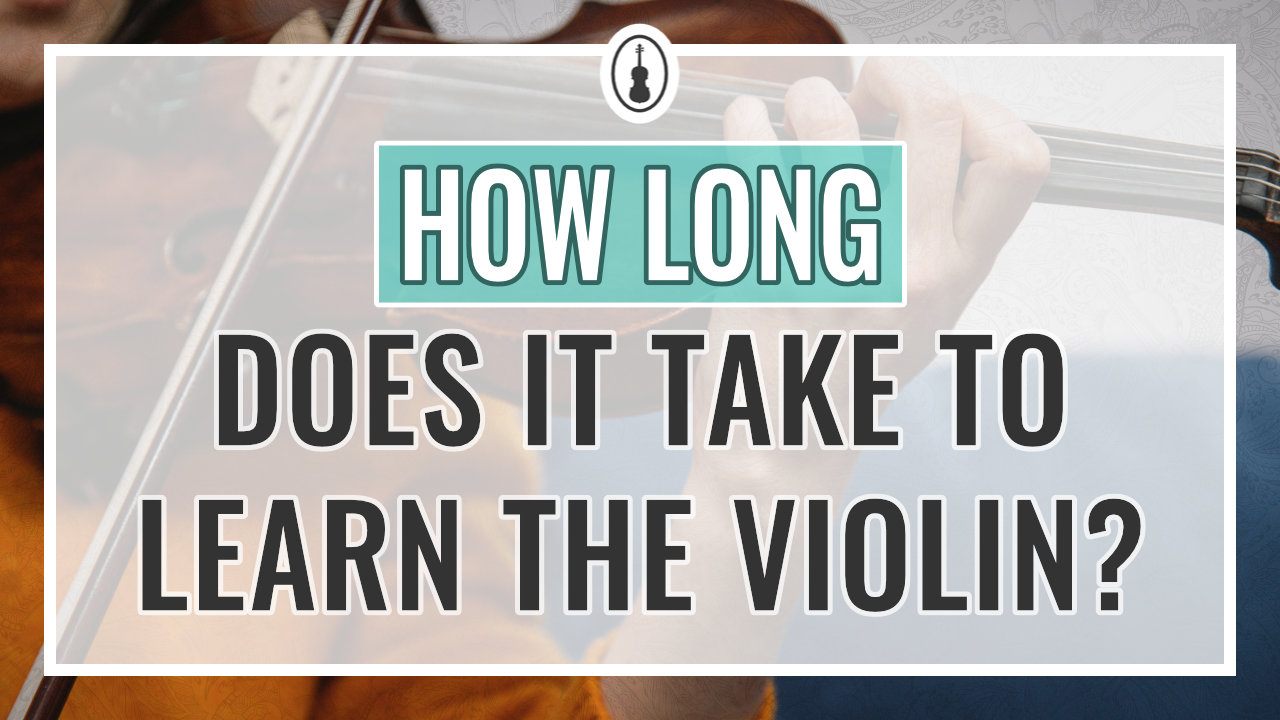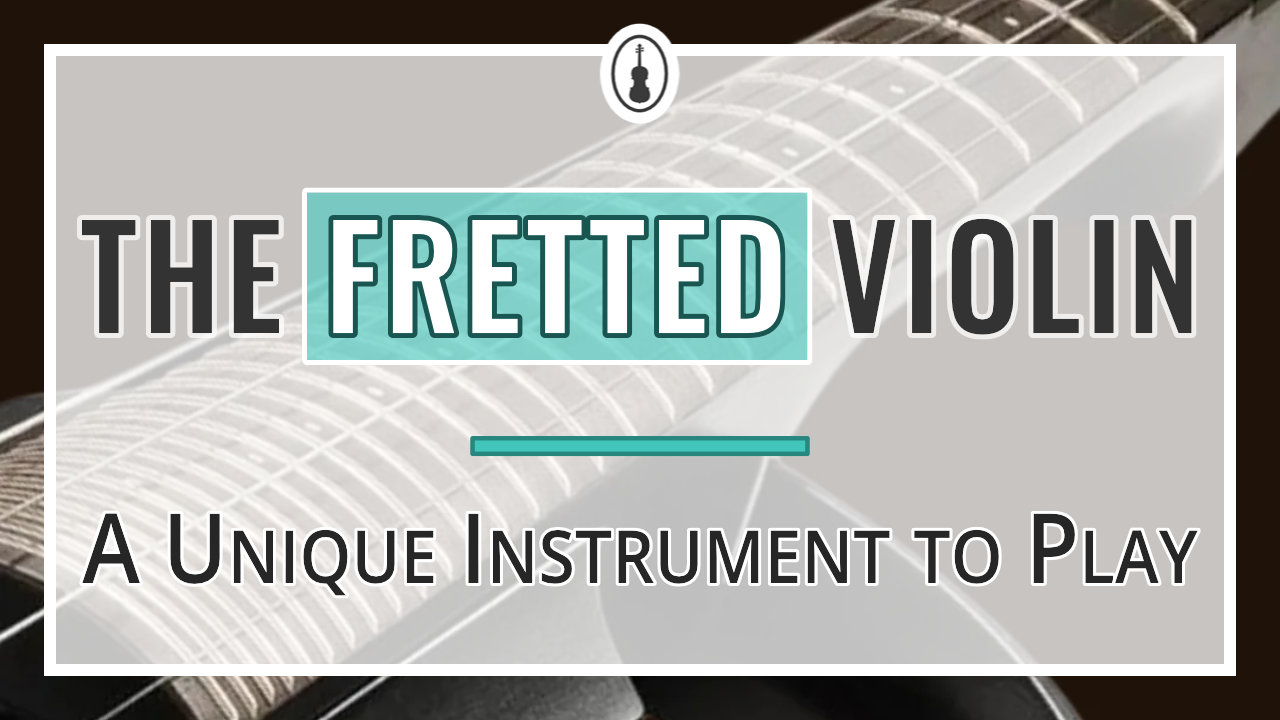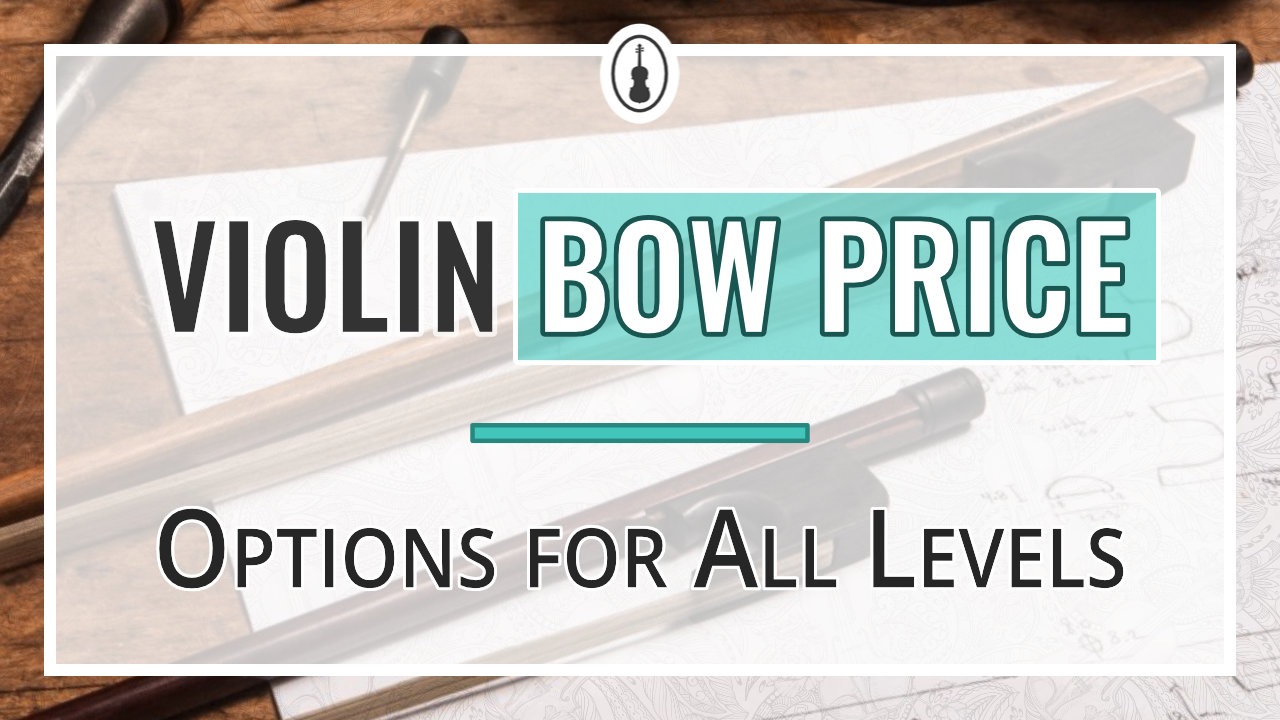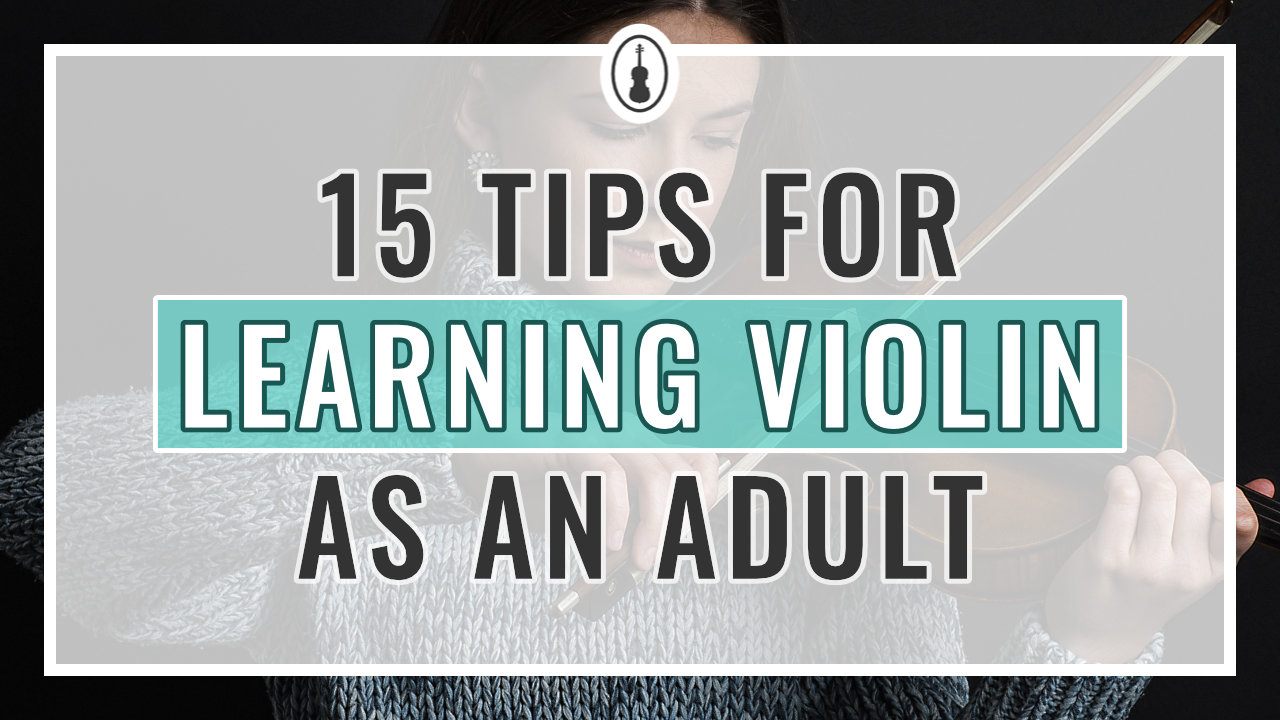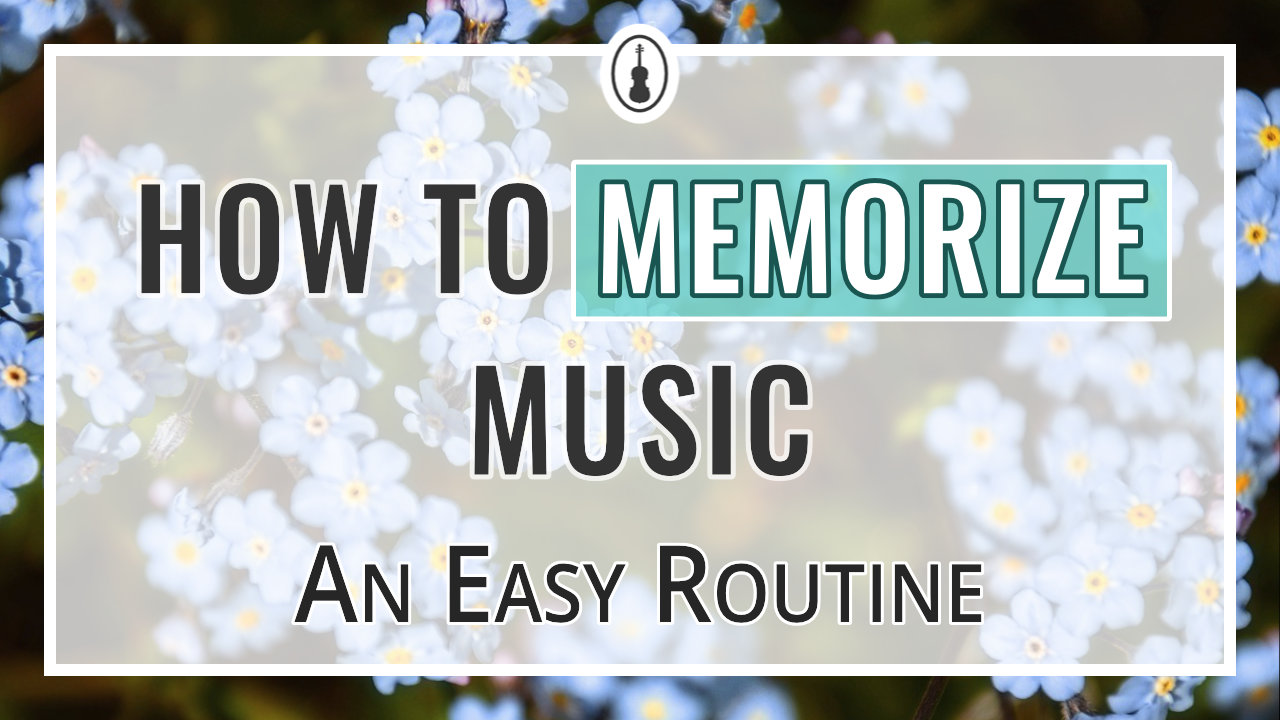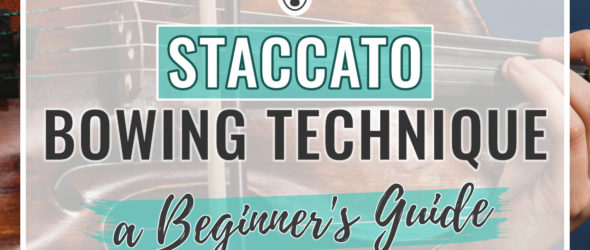
Learn what is staccato, how to play it on a violin, and listen to a few examples in violin repertoire!

What is Staccato on the Violin?
Staccato is a musical articulation that translates to “detached” in Italian. On the violin, staccato is interpreted as shortened, detached notes with a small accent at the beginning of the bow stroke. Staccato means that each note is cut short so there is a space in between. Every note should sound perky and lively due to its strong beginnings.
Staccato can be found in all kinds of music – fast or slow music, ballads, fiddle, orchestral music, and more. It is an articulation that is filled with excitement and direction.
Staccato in Violin Sheet Music Notation

Staccato is easy to spot. It is notated with a tiny dot above the note head. The dot is interpreted as a bite and release, similar to martelé, but also includes a shortened duration of the note.
Staccato notes can be used in both bow directions – up bow or down bow. When you play the staccato stroke with separate bows, you will want each note to get a clear beginning (yes, even your up bows!).
You can also play multiple notes on one bow stroke, which is notated with dots over the notes and a slur over that entire grouping. When that grouping is all on an up bow, it is often called “flying staccato” because of the speed at which the bow is moving.

Flying staccato can be especially difficult because there are short notes under one up bow and the bow must stop between each note and re-articulate. A grouping of staccato notes can also be on a down bow, but is less common.
Examples of Staccato in Violin Repertoire
Let’s listen to a few examples of violin staccato!
Schubert – Rondo for Violin and Piano in B Minor
An example of the staccato bow stroke in violin is from Schubert’s Rondo for Violin and Piano in B minor. The dots can be easily seen above the notes and indicate that the violinist should use a fast bow with a grab at the beginning, as well as a shortened duration of the note.
You can see in this sheet music snippet that in the first measure staccato can be played with either bow direction, first starting down bow and then the next note being an up bow. In the fast tempo, you will want to shorten the notes even more.

Tchaikovsky – Violin Concerto in D Major, 1st mvmt.
Another example of staccato is the Allegro guisto part of the Tchaikovsky Violin Concerto, 1st movement.
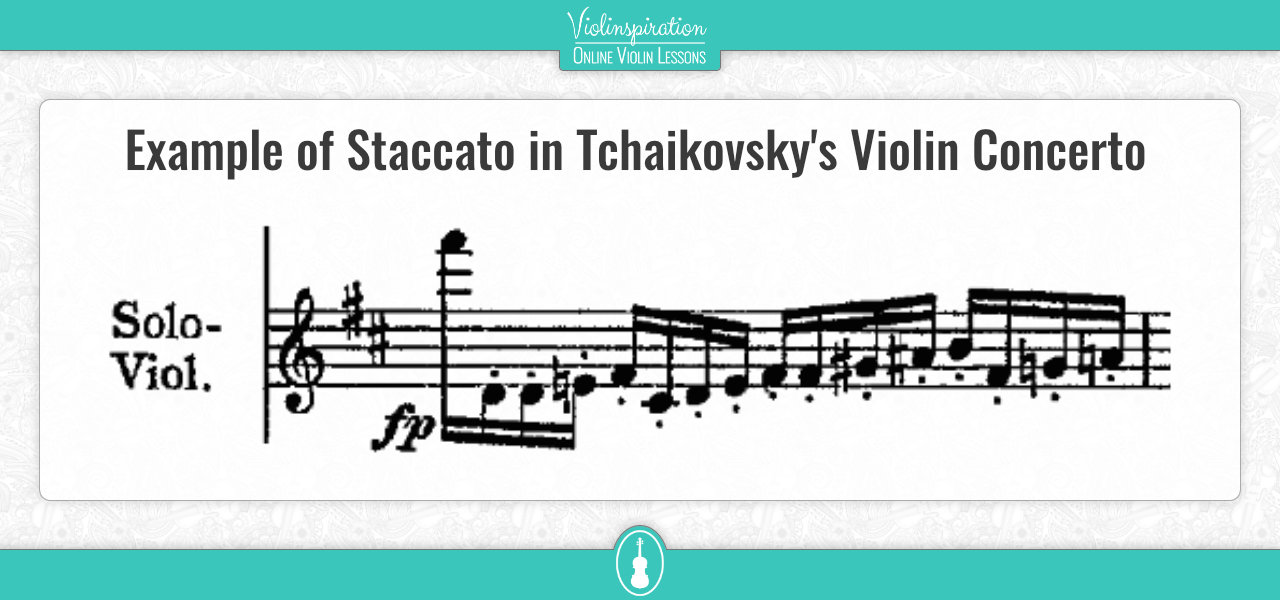
In this video, Joshua Bell showcases how to produce the staccato stroke in a fast tempo. The result is quick, separated strokes with lots of space between the notes. Even though he is playing with a small amount of bow, every note has a clear tone and a bite to the beginning.
Sarasate – Zapateado
Flying staccato can be heard in Sarasate’s Zapateado. Midori flawlessly captures the hair of the bow to bite every note while simultaneously moving the bow on the long up bow. Watch as the first finger of her right hand leads the flying staccato to ensure the bow grabs onto the string to then spring off almost immediately after.
How Do You Play Staccato on the Violin
Staccato on individual bows is not too difficult! It is similar to martelé in stroke, but a little different in that you want every note to be cut short a little bit. This allows the beginning of the note to be clear precisely and energetically.
To first understand how to play staccato, try individual bow strokes on one note. The main principles of staccato are:
- clear beginning like a small accent,
- release of the bite,
- stop the note from being its full value, and
- re-engage the bow with a bite for the next beginning of the note.
When you are first starting out, use a lot of bow to get the most tone you can. You want the violin to ring in between every bite so make sure you are releasing the tension of your hand (especially your index finger) and moving the bow quickly to really get the vibrations of the string. Try a really resonant note, like an open A string for your first time.
When you’re ready for the up bow, make sure to have stopped the bow completely, engage the index finger to grab the string at the tip, and release the pressure quickly and with speed to zoom to the middle half or lower. Try not to move your wrist at all, as that can change the angle of the stick.
Staccato Exercises
Here’s how you can practice staccato violin technique:
1. Warm up and synchronize your hands
Warm up your hands for basic coordination. Try a legato scale to start. You want to get your hands moving smoothly and the coordination of both hands to sync up.
Try to feel the connection between the string and your left hand as you connect each bow.
2. Practice accents

Practice the scale with martelé at the upper half of the bow. Each note should have a clear start to it, which is initiated by the index finger of your right hand.
Remember that martelé means each note gets its full value but unlike legato, the notes have a clear start. A little extra pressure from your first finger on the bow allows you to grab onto the string and then quickly release. Reduce the bow speed at the end of the stroke.
3. Shorten the notes

Now that you have your martelé working for you, simply shorten the note length so that you stop early from playing the full quarter note. Make sure that each note has the same zing to its start and that each note is the same length, regardless of bow direction.
4. Play scales and etudes
Scales are great to practice various bowing techniques. This time, you can try to play all notes staccato. If you haven’t already, make sure to download the booklet with the most common beginner scales below.
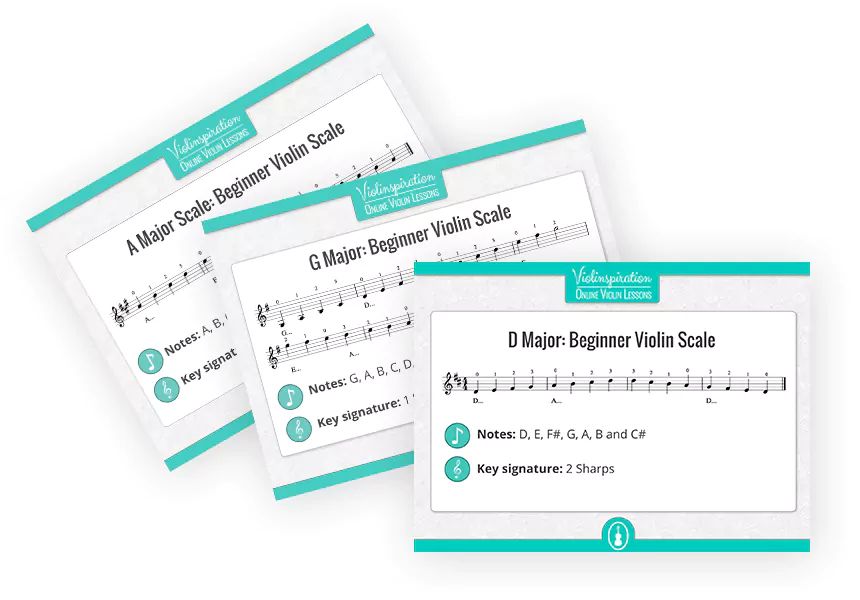
5 Most Common Violin Scales for Beginners
A great book of etudes is Kreutzer’s 42 Studies for Violin. In his 2nd etude, he asks for a variety of bowing and articulation patterns, many of which are staccato. Try playing this etude with all separate, staccato bows before trying any of the bowing variations.

If you’re looking to improve your up-bow staccato, try Kreutzer etude number 4. This study is great for working on accents on the down bows, then grabbing the string for each note on the up bow staccato. Make sure to divide your bow so that you have enough for the half note at the end of the bar. Unlike separated bow staccato, you want your wrist to be able to counter the quick “up” motion so you’ll need to keep the wrist a little looser.

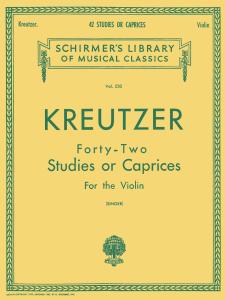
42 Studies or Caprices by Kreutzer
Support us for more FREE content No extra costs for you Recommended by Violinists
You can download for free the book of Kreuzer Etudes over here (Julia’s Violin Academy members only).


